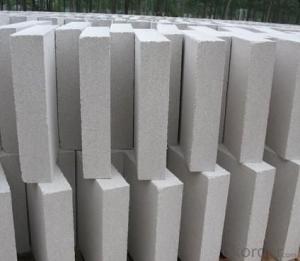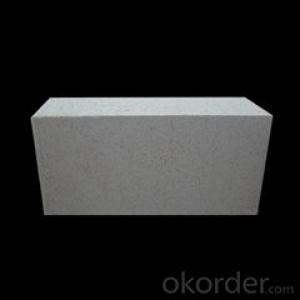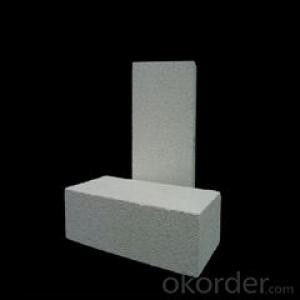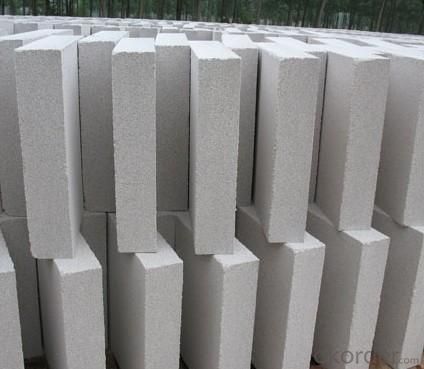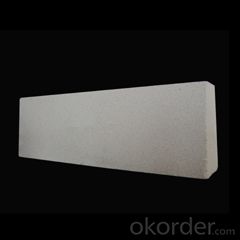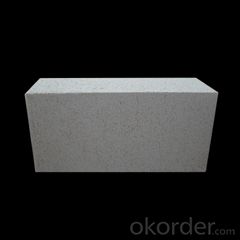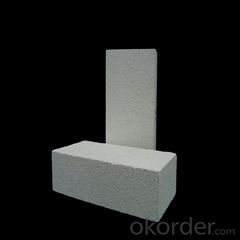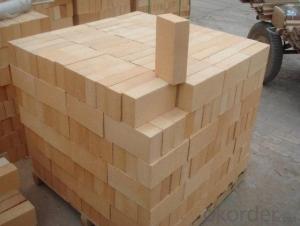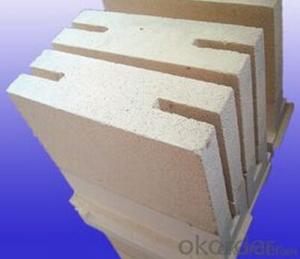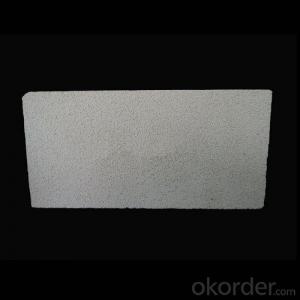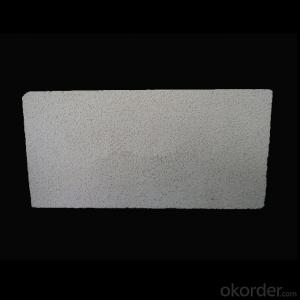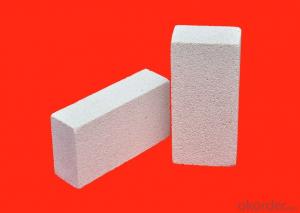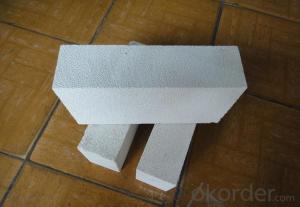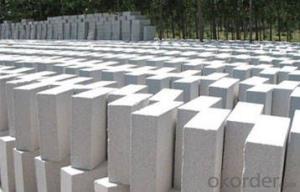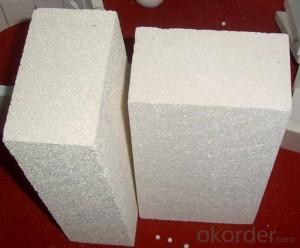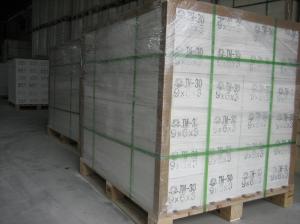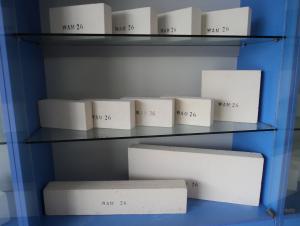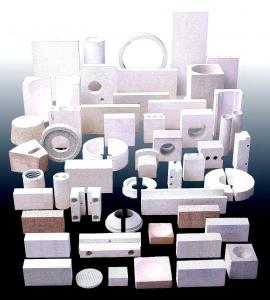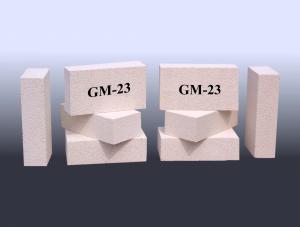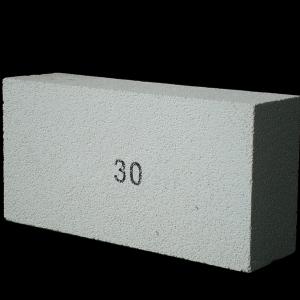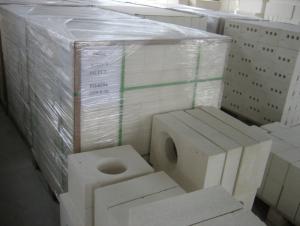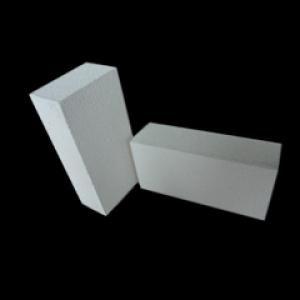Insulating Fire Brick - Refractory Mullite Insulating Refractory Brick JM 94
- Loading Port:
- Shanghai
- Payment Terms:
- TT OR LC
- Min Order Qty:
- 5000 kg
- Supply Capability:
- 10000 kg/month
OKorder Service Pledge
OKorder Financial Service
You Might Also Like
Refractory mullite insulating refractory brick JM 23
Okorder series heat insulation brick
Okorder series thermal insulation brick is an effective, energy saving, low carbon, environmental protection advanced, according to the ASTM standard manufacturing products. Okorder series products are best Li Ning and insulation in all types of industrial furnaces in the metallurgical field, aluminum, petrochemical, electric power and glass ceramic materials. They can be used as part of the working layer of thermal insulation or non - melting. Products have been widely used in the following furnace, achieved satisfactory results.
Application of heat preservation brick
Metallurgical Industry: blast furnace, hot blast furnace, heating furnace, etc..
Petrochemical Industry: ethylene cracking furnace, hydrogen production furnace, primary reformer, heating furnace, etc..
Ceramic industry: roller kiln, kiln, etc..
Glass industry: glass furnace regenerator, etc.
Carbon industry: carbon furnace, etc..
Aluminum electrolysis industry: aluminum reduction cell, etc.
Other industries: tunnel kiln, shuttle kiln, etc..
Advantages of heat insulation brick
Low thermal conductivity: more porosity will bring good thermal insulation effect, energy saving.
High crushing strength: high crushing strength, volume stability.
Low heat storage: small heat storage to absorb more heat, energy-saving effect is obvious.
Gao Chundu: iron, alkali metal impurity content is low.
The precise size: Brick size processing precision, special shape cutting and grinding, accelerate the brickwork.
Insulating brick picture
Common problem solutions
1. What products do you have?
We have all kinds of refractory bricks, refractory casting materials, mortar, cement, ceramic fiber products, etc..
Or you can browse our products to choose what you need.
2. How to control product quality?
With strict quality control system throughout the material selection and production process, we have the quality of refractory materials and ceramic fiber products to meet customer requirements.
From the selection of raw materials, the quality of our control to start. The quality certificate of the raw material is required, each batch of the products are to be tested in the use of the forward line. In the production process, the quality control by the workers, and then each piece of classification, and through the quality supervision and inspection.
3. Can you give me a brief introduction to the application of your product?
My company is mainly engaged in refractories in the steel, cement, glass, ceramics, petrochemical, electric power and other industries.
4. What information do you need if I need you?
In order to select the right products, we will provide us with information, such as the United States, technical data, order quantity, product application, etc..
If you have any questions, please contact us.
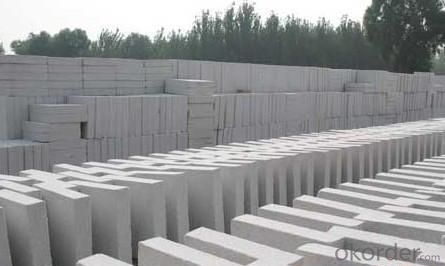
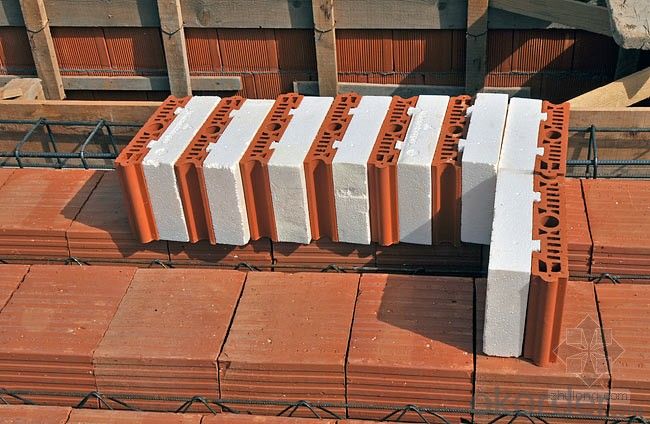
- Q: Can insulating fire bricks be used for insulation in walls or roofs?
- Insulating fire bricks have a primary purpose of being used in high-temperature applications like furnaces, kilns, and fireplaces. Although they provide exceptional thermal insulation properties, they may not be the optimal choice for insulating walls or roofs of residential or commercial buildings. It is common for insulating fire bricks to be manufactured using lightweight refractory materials including ceramic fibers or expanded clay. These materials possess high resistance to heat; however, they may not offer sufficient insulation against cold temperatures or moisture. Furthermore, their structural integrity may not be suitable for load-bearing applications or other specific requirements related to walls or roofs. For insulation in walls or roofs, it is generally advised to utilize materials that are specifically designed for building insulation purposes. Examples of such materials include fiberglass batts, spray foam insulation, or rigid foam boards. These materials are more suitable for providing both thermal and moisture resistance, as well as meeting the necessary structural requirements. To summarize, while insulating fire bricks may provide excellent thermal insulation properties, they are not typically recommended for use in walls or roofs. It is advisable to seek guidance from a building professional or insulation specialist to determine the most appropriate insulation materials for your specific needs.
- Q: Do insulating fire bricks require any curing or drying time?
- Absolutely not! Insulating fire bricks do not need any curing or drying time whatsoever. These bricks are produced through high-temperature methods, resulting in a completely cured and dried product. Consequently, they can be utilized right after installation without any requirement for extra curing or drying time.
- Q: Can insulating fire bricks be custom-made?
- Indeed, it is possible to manufacture insulating fire bricks according to specific specifications. Typically, insulating fire bricks are crafted using lightweight materials like vermiculite, perlite, or refractory fibers, which are easily shaped into various forms and sizes. With this versatility, manufacturers can produce tailor-made insulating fire bricks to cater to specific demands and purposes. The customization options available may involve alterations in dimensions, thermal conductivity, compressive strength, and density. By adjusting the composition and design of the insulating fire bricks, they can be optimized to function optimally within specific temperature ranges, insulation requirements, and environmental conditions. Consequently, customers have the opportunity to collaborate with manufacturers in order to develop personalized solutions that perfectly align with their individual requirements.
- Q: Are there any special requirements for the use of raw materials in thermal insulation brick production equipment? What about the raw materials?
- . The control system needs to break, pouring the completion of data acquisition and process control of production site, steam curing process monitoring and control, production line of aerated brick Deyi heavy do better and integrity, production operation management etc..
- Q: Are insulating fire bricks resistant to fire?
- Absolutely, insulating fire bricks are resistant to fire without a doubt. These bricks are meticulously crafted and engineered to endure soaring temperatures and offer exceptional insulation properties. Made from lightweight refractory materials like ceramic fibers or expanded clay, insulating fire bricks possess low thermal conductivity and boast high melting points. Consequently, they excel at retaining heat and safeguarding against extreme temperatures. Their wide usage in furnaces, kilns, and fireplaces, where intense heat prevails, is a testament to their effectiveness. In essence, insulating fire bricks are tailor-made to be highly fire-resistant, making them an ideal choice for insulation against heat and fire prevention.
- Q: Can insulating fire bricks be used in fireplaces?
- Yes, insulating fire bricks can be used in fireplaces. Insulating fire bricks are specifically designed to withstand high temperatures and provide excellent insulation, making them suitable for use in fireplaces. They are capable of withstanding temperatures up to 3000°F (1650°C), which is well within the operating range of most fireplaces. These bricks are made from special materials that have low thermal conductivity, allowing them to retain heat and prevent it from escaping the fireplace. This insulation property helps to improve the efficiency of the fireplace by keeping the heat inside the firebox and preventing it from dissipating into the surrounding area. Additionally, insulating fire bricks are lightweight, durable, and easy to install, making them a popular choice for fireplace construction or renovation projects.
- Q: Are insulating fire bricks suitable for insulation in power boilers?
- Yes, insulating fire bricks are suitable for insulation in power boilers. They have excellent thermal conductivity and can withstand high temperatures, making them effective in reducing heat loss and improving energy efficiency in power boilers. Additionally, their insulating properties help to maintain a consistent temperature within the boiler, enhancing its overall performance and reliability.
- Q: Can insulating fire bricks be used in electric furnaces?
- Yes, insulating fire bricks can be used in electric furnaces. Insulating fire bricks are designed to have low thermal conductivity, which makes them ideal for use in applications where heat needs to be contained or insulated. Electric furnaces require insulation to prevent heat loss and improve energy efficiency. Insulating fire bricks can withstand high temperatures and provide excellent insulation properties, making them suitable for use in electric furnaces. Additionally, they are lightweight and easy to install, making them a preferred choice for insulation in electric furnaces.
- Q: What is the maximum temperature that insulating fire bricks can withstand?
- Insulating fire bricks can withstand temperatures up to 3000°F (1650°C).
- Q: Are insulating fire bricks resistant to vibrations?
- Insulating fire bricks, although renowned for their exceptional thermal insulation properties, usually lack resistance against vibrations. Typically, these bricks are crafted from lightweight materials like ceramic fibers, vermiculite, or perlite, which do not possess notable capabilities to dampen or absorb vibrations. Hence, if a particular application necessitates vibration resistance, it would be prudent to explore alternative materials or designs that are better suited for such circumstances.
Send your message to us
Insulating Fire Brick - Refractory Mullite Insulating Refractory Brick JM 94
- Loading Port:
- Shanghai
- Payment Terms:
- TT OR LC
- Min Order Qty:
- 5000 kg
- Supply Capability:
- 10000 kg/month
OKorder Service Pledge
OKorder Financial Service
Similar products
Hot products
Hot Searches
Related keywords
